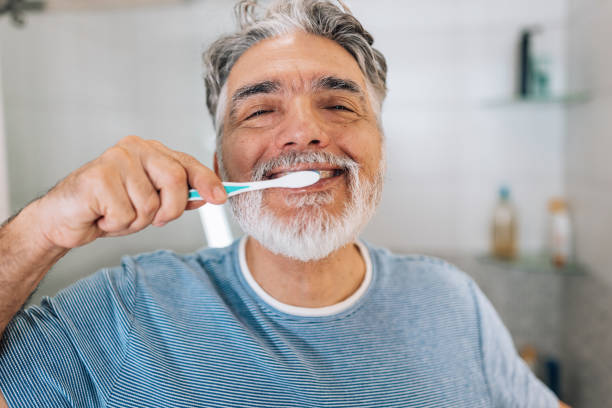In this article, we’re going to learn on how to correct some Toothbrushing mistakes we normally do.

Even while it can seem easy, not everyone washes their teeth as completely as they might. Fortunately, there are ways to fix problems when they occur.
1. You picked the wrong brush.
How do you choose a brush from the dizzying array at your neighborhood supermarket? Make sure your brush can access the necessary places, advises Kimberly Harms, a Farmington, Minnesota, dentist. That region ought to be reachable with a toothbrush. It may be a power or manual toothbrush. Harms claims that there is just one rule that cannot be altered. It must have mild bristles, which is the one requirement we insist on without fail.
The bristles have to flex a little bit to get right beneath that gum.”
The brush’s head size is also significant, especially if you have a small mouth. Brushes come in a variety of handle sizes and angles. Some people are more adaptable than others.
Dentists believe that the bristles that eliminate microorganisms and release plaque from your teeth and gums are the most important portion. Gum disease and tooth decay can both be caused by plaque.
To reach the gum directly, the bristles must slightly bend. The size of the brush’s head is also important, particularly if your mouth is small. There are numerous handle sizes and angles available for brushes. Some people can adjust better than others. The bristles that remove bacteria and liberate plaque from your teeth and gums are thought to be the most crucial component by dentists. Plaque can result in tooth decay and gum disease.
Sometimes individuals think that the better bristles are those with more resistance. But Maricelle Abayon, a dentist at Rochester, New York’s Eastman Institute for Oral Health, says that isn’t always the case. Stiff brushes are less effective at cleaning than those with soft bristles. Your teeth’s structure could be weakened by the rough bristles. Additionally, check your new brush for the American Dental Association’s seal of approval.
2. You’re pressed for time.
At least twice per day, brush your teeth for two minutes each time. However, you’re late for work or class. Or perhaps all you want to do is sleep. Every now and then, you should brush for less time. Don’t. In the past, we used to advise using an egg timer or something similar, says Messina. But nowadays, everyone carries about a beautiful gadget called a cell phone. If you wish to set a timer for two minutes, that is OK.
She observes that “a lot of young folks are wandering about with headphones on.” “Your average pop song is in the 2-3 minute range if you can leave your headphones in and put on a song.” You’ve definitely been in there long enough if you brush while listening to one of your favorite tunes.”
3. You’ve been holding on for far too long.
It can be difficult to give up a decent toothbrush once you’ve discovered one. However, if the bristles get discolored, bent, or dirty-looking, it’s time to toss the brush.
When the bristles become frayed, it loses its effectiveness. So, at the very least, change it every 3 to 4 months. It’s also a good idea not to tell anyone about your brush.
Many young people are seen “wandering around with headphones on,” she observed. “If you have the option to leave your headphones in while listening to music, the typical pop song lasts between two and three minutes.If you brush while listening to your favorite music, you’ve certainly spent enough time there.
3. You’ve been hanging onto things for far too long.
Once you find a good toothbrush, it can be challenging to stop using it. It’s time to throw away the brush if the bristles turn yellow, bend, or appear unclean. It loses its potency when the bristles start to tear.
Consequently, swap it out at the very least every three to four months. Keeping your brush a secret from others is another smart move. Keep it outside when it’s damp to avoid mold or germs growing on it.
4. You grind your teeth furiously.
When it comes to brushing, harder isn’t necessarily better. “I think one of the most prevalent issues is when people attempt to wash their teeth too vigorously.
According to Matt Messina, a dentist from Fairview Park, Ohio, “they feel that if they don’t really attack the teeth, like they’re trying to clean the grout in their bathroom tile, then they’re not doing the correct job.
According to Messina, the plaque is soft and loose, therefore you don’t need to scrub it. According to Messina, the plaque is soft and loose, therefore you don’t need to scrub it. “The simplest way to fix this is to use the word massage instead of the conceptual problems of “scrub” and “scrub brush.”
5. You move backward and forth.
It’s a typical mistake to wash your teeth from left to right. Once more, opt for a massage over a scrub. Dentist Sangeeta Gajendra suggests “starting from the gum and going up and down” in small, circular, upward and downward motions. She practices at the Eastman Institute for Oral Health in Rochester, New York.
According to her, if you do it incorrectly, it won’t help. In fact, she says, “you can hurt people.”




